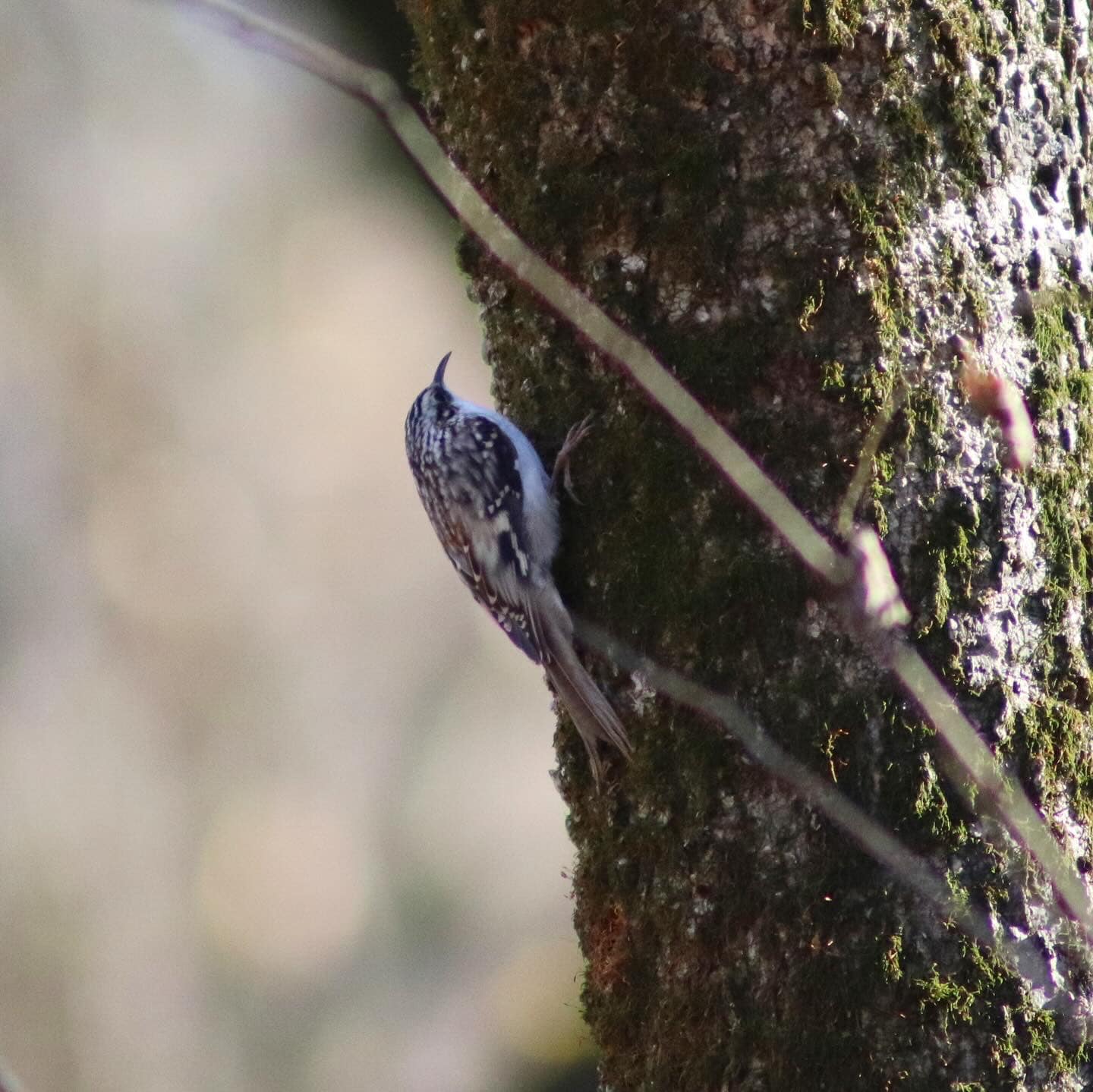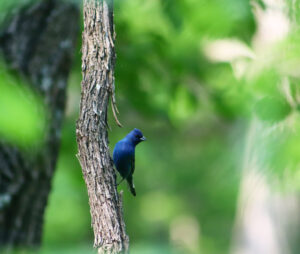by Jacob Crider
During winter, songbirds are highly active and must feed throughout the day to survive the harsh, cold, and wet conditions until breeding season. This can leave them vulnerable to predators, so each bird has adapted ways to remain inconspicuous while foraging. Along with these adaptations, multiple species of birds may flock together for security and to feed from different areas within an occupied habitat.

Brown Creepers (Certhia americana) adapt to forest and swamps with their immaculate bark-like camouflage. They are small mottled brown birds with a white belly and a long-curved beak. They behave similarly to woodpeckers and nuthatches where they will creep along the bark of trees in search of food items. Brown Creepers will start their ascent at the base of a tree, usually with shaggy or stripped bark, and move slowly up the tree gleaning invertebrates from within the folds of the tree bark. This service is beneficial to the bird in the form of a meal, and the tree gets a free insect cleaning service which can help with mitigating insect outbreaks and tree mortality.
Found in the Southeastern U.S during winter months, the Brown Creeper is the only member of the genus Certhia in North America, making it a unique bird to our region. At CMNP they begin arriving in November and stay until April. They favor forests with plenty of tree species to forage from and can also be found in wetlands as long as there are trees to visit. Listen for their call, which is a fairly quiet high pitched cricket-like sound.


